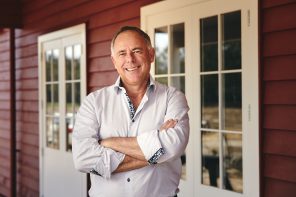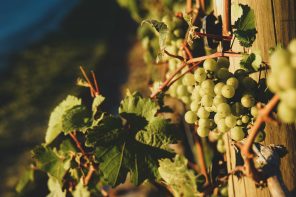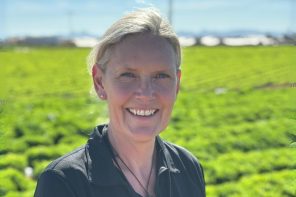With experience working across fourteen different vintages, Richard Painter is no newcomer to winemaking. Despite his years of experience in the wine industry, Painter does not seem concerned at all with building a legacy for himself as a winemaker.
“The legacy I care about is that we manage the Te Awa land sustainably, so it will continue to produce fine wines for many years to come,” Painter said.
The influence of the Te Awa environment and landscape plays a significant role in both the taste and production of Painter’s wines. He believes a great wine should speak of where it's grown and be authentic. Located on top of what used to be the Te Awa o te Atua river, a branch of the Ngaruroro River, the Te Awa Single Estate is seated in a prime place for winegrowing. In 1867, a significant flood caused the river to change its path away from the Te Awa o te Atua offshoot, leaving a dried-up river bed full of stony gravel that was perfect for growing red wine.
When it comes to making his wine, Painter adopts a natural hands-off approach. “I try and let the flavours of the vineyard come through without too much interference, which means gentle handling of the fruit when it comes into the winery, and a lot of natural fermentation using the wild yeast from the vineyard,” he explained.
Recently Painter has won awards for his Te Awa Single Estate Hawke’s Bay Chardonnay, such as the coveted Champion Wine of the Show at the Hawke’s Bay A&P Show and the Royal Easter Show, also being awarded ‘Winemaker of the Year’ at the latter.
Painter describes his wines as understated, elegant, while still having a lovely depth of flavour. The Single Estate wines are produced exclusively for restaurants and fine wine stores, so with that in mind, they are deliberately styled to pair well with food. Furthermore, the Te Awa Winery has a restaurant on-site at the vineyard, which influences the flavours of the wines.
“We have a superb restaurant on our vineyard, and when we blend and finish the wines,” he said. “I think of how someone sitting on our lawn eating lunch will enjoy the wine, and this guides my decision making.”
Having influenced Painter's enthusiasm and dedication to maintaining the Te Awa environment, Painter considers the vintage's owner and local New Zealand wine legend, Sir George Fistonich, a mentor. “George is extremely passionate about family and New Zealand ownership of our industry, is steadfast in his pursuit of quality, and is passionate about sustainability.”
Some of Painter’s efforts to make the estate more sustainable include replacing the winery’s tractor fleet with the most fuel-efficient tractors on the market. The most significant change is the gradual move towards organic production, with 20 percent of the vineyard already in organic production. The winery is certified organic with BioGro, and within a few years, the vineyard blocks will be as well.
Painter is cautious about the growing impacts of climate change, something that threatens to have significant effects on the wine industry. “The biggest risk to us will be if climate change brings about the increased occurrence of unsettled weather,” he explained. “For the last five years in a row, we have had ex-tropical cyclones impact us during February and March which places pressure on us at harvest.”
In the coming years, Painter has a lot of vineyard planting and rejuvenation ahead of him. “We have some spare, bare land that is ideal for chardonnay which will help us grow, given the demand for this wine.” But the thought of the local environment and sustainability never ventures far from his mind. “We’ll keep striving towards our medium-term goal of the Te Awa vineyard being in full organic production.”
Painter identifies himself as a homebody and spends most of his spare time renovating his bungalow in Hastings. He also loves cooking, gardening, and taking his dog for runs around the beautiful Hawke’s Bay.
With all his experience in the art of winemaking, Painter offered some wise advice for budding winemakers. “I would advise them to get experience in all facets of the industry. Work in the vineyard and the cellar door as well as the winery. Having an understanding of how a vine grows and what customers like to see in wine will make you a better winemaker.”






